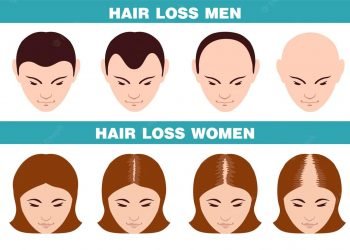Punitive damages are crucial in personal injury law. They serve as a beacon of justice and deterrence against egregious misconduct.
Punitive damages target the wrongdoer’s actions directly to punish and dissuade future similar transgressions. These damages are reserved for cases where reputable law firms, like LMDLawFirm.com, prove that the defendant’s behavior is reckless, malicious, or fraudulent and goes beyond mere negligence.
Beyond their punitive nature, these damages play a vital role in balancing the scales of justice. They convey that certain behaviors will not be tolerated in society, promoting accountability and a safer environment. Additionally, punitive damages can serve as a form of closure for the victim, offering a sense of vindication and retribution.
Despite their importance, punitive damages are often controversial, with critics arguing they can lead to excessive awards and frivolous lawsuits.
However, when used judiciously and in line with legal principles, punitive damages uphold the standards of conduct in personal injury law.
In this article, we delve into the intricacies of punitive damages, exploring their purpose, application, and impact within the broader framework of personal injury cases.
What Are Punitive Damages?
Punitive damages, commonly known as exemplary damages, are monetary awards granted by the court as a form of punishment to the defendant in addition to compensatory damages.
Unlike compensatory damages, which aim to compensate the plaintiff for losses suffered due to the defendant’s actions, punitive damages are meant to hold the defendant accountable for their egregious conduct and deter similar conduct in the future.
When Do Punitive Damages Apply?
Punitive damages are not granted in all personal injury cases. They are meant for situations where the defendant’s behavior is particularly egregious. The sections below discuss the eligibility criteria for punitive damages in detail.
Gross Negligence
Punitive damages may be given or awarded in cases of severe negligence, which is a higher degree of negligence. Gross negligence is when there is a reckless violation of the safety or rights of others.
For example, a company that knowingly allows a dangerous product to remain on the market despite the risk of harm to consumers may be liable for punitive damages.
Intentional Misconduct
Punitive damages are often awarded in cases of intentional misconduct, where the defendant’s actions were deliberate and intended to cause harm. This could include assault, fraud, or defamation where the defendant’s conduct was willful and malicious.
Wanton Recklessness
Wanton’s recklessness involves a conscious disregard for the safety or rights of others. It is similar to gross negligence but may involve a more intentional or reckless disregard for the consequences of one’s actions.
For example, a drunk driver who caused an accident may be liable for punitive damages if their conduct is deemed wantonly reckless.
The Role of Punitive Damages
Deterrence
Punitive damages serve as a hindrance, discouraging the defendant and others from deliberately getting involved in similar wrongful conduct in the future. The threat of punitive damages can motivate individuals and entities to act more responsibly and avoid actions that could harm others.
Punishment
Punitive damages also punish the defendant for their egregious behavior. Unlike compensatory damages, whose objective is to make the plaintiff whole, punitive damages go beyond this purpose by imposing additional financial consequences on the defendant for their actions.
Compensation for Victims
While punitive damages primarily serve deterrence and punishment purposes, they can also provide some compensation to the victim.
In cases where the victim has suffered significant harm due to the defendant’s conduct, punitive damages can help offset some of the financial losses and suffering experienced by the victim.

How Are Punitive Damages Determined?
Severity of Misconduct
The severity of the defendant’s misconduct is a critical factor in determining punitive damages. Courts consider the nature of the wrongful conduct, including whether it was intentional, reckless, or malicious. The more egregious the misconduct, the higher the potential for punitive damages.
Defendant’s Financial Situation
The financial situation of the defendant is also a crucial consideration. The court assesses the defendant’s financial resources to determine the punitive damages that can be awarded.
Punitive damages should be sufficient to prevent the defendant from getting involved in similar conduct in the future, but not excessive to the point of financial ruin.
Similar Cases
Courts may also look at similar cases to guide their decisions on punitive damages. They consider how punitive damages were awarded in comparable cases to ensure consistency and fairness. This helps prevent arbitrary or inconsistent awards of punitive damages.
Legal Limits on Punitive Damages
There are legal limits on punitive damages to prevent excessive awards. These limits ensure that punitive damages are proportional to the harm caused and the defendant’s conduct.
In some jurisdictions, there are statutory caps on punitive damages; in others, the courts may review punitive damages awards to ensure they are reasonable.
Conclusion
Punitive damages are crucial in personal injury law to punish defendants for egregious conduct, deter similar behavior, and promote justice.
While there are limits on punitive damages, their use remains an essential component of the legal system’s efforts to prevent harm and protect individuals from wrongful actions.












